Women’s World Cup squads 2023: All you need to know
Published: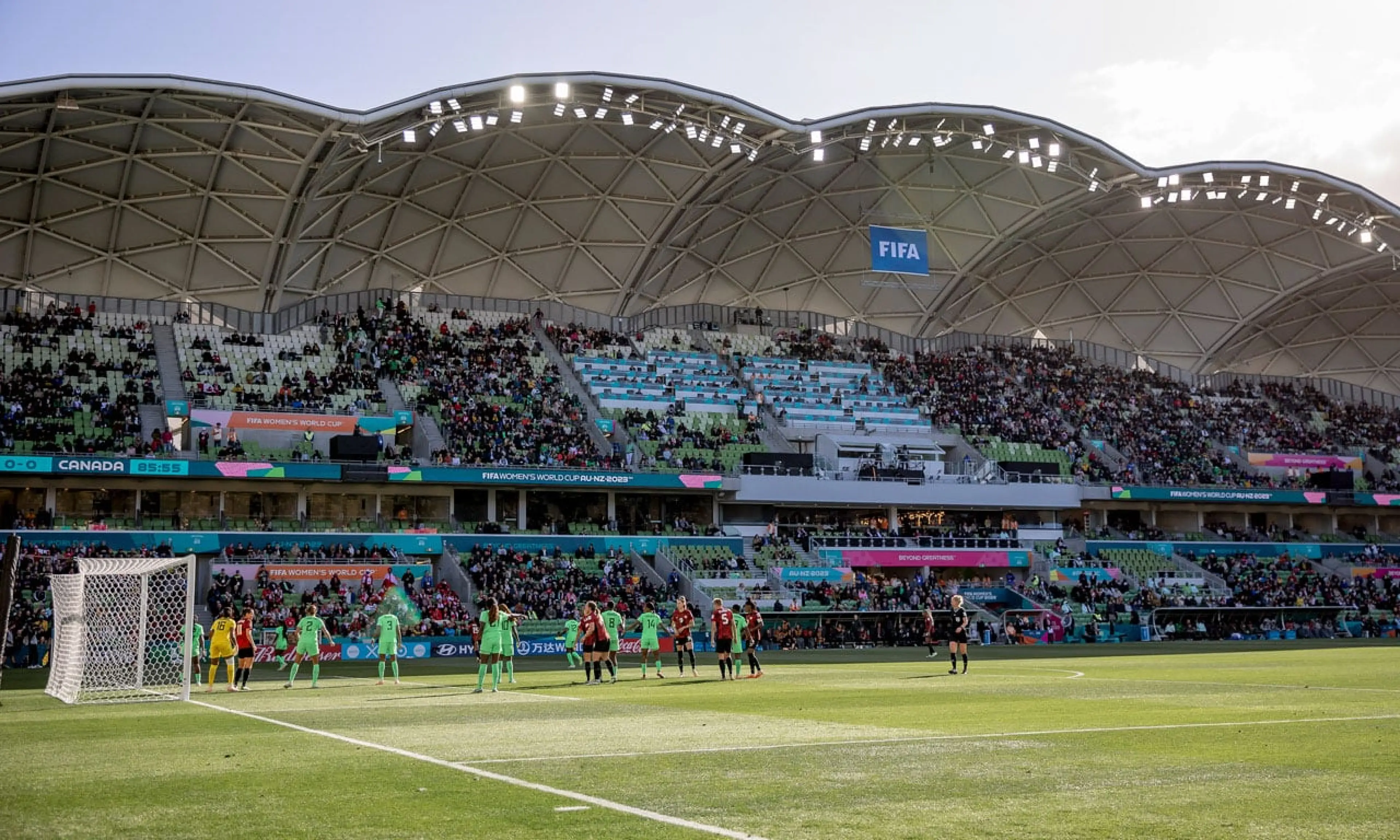
All you need to know about the Women’s World Cup squads
With the Women’s World Cup having kicked off in Australia and New Zealand, we have analysed every one of the 736 players at the tournament to pick out some interesting trends.
Which clubs have provided the most players?
Barcelona are the most represented club at this summer’s tournament with 18 players, including nine of the Spain squad as well as England’s Lucy Bronze and Keira Walsh, Norway duo Caroline Graham Hansen and Ingrid Syrstad Engen and players from Sweden, Nigeria, Brazil and Switzerland.
London rivals Chelsea and Arsenal are next on 16 apiece, ahead of Real Madrid (15) and Paris Saint-Germain (14).
The Gunners have only two members – Lotte Wubben-Moy and new signing Alessia Russo – of England’s squad but their players feature for 10 nations in total, the most of any club.
Meanwhile, Chelsea account for five of Sarina Wiegman’s contingent – including captain Millie Bright and new signing Hannah Hampton – plus three Canadians and two from Germany, Norway and Sweden’s squads. France’s Eve Perisset and Australia’s Sam Kerr complete the Blues’ travelling group.
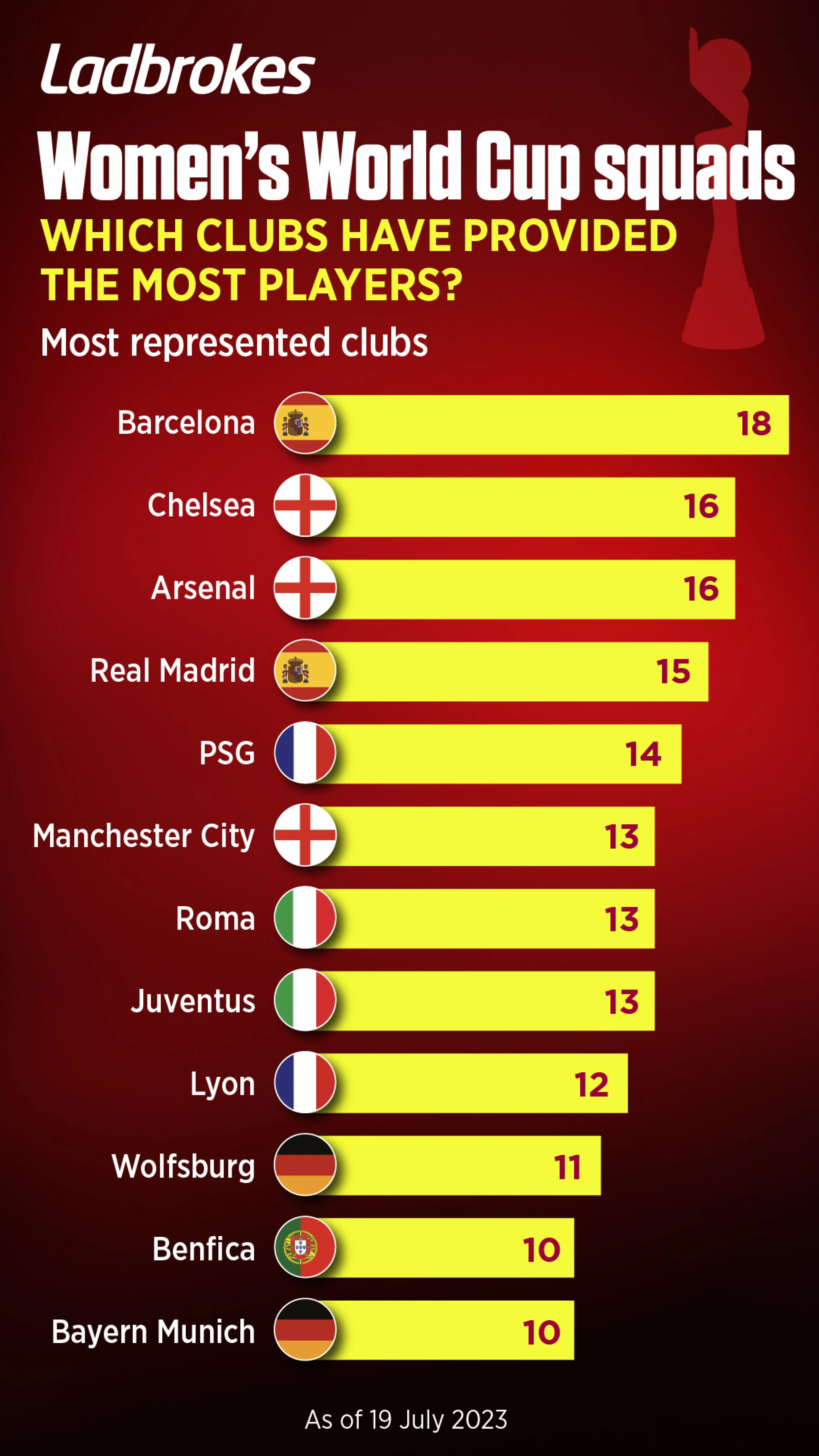
Manchester City – the strongest presence in England’s squad with six players – have sent a total of 13 players to the tournament, the same number as Italian clubs Roma and Juventus.
Which squads contain the most English-based players?
The English domestic league is the only national system to provide more than 100 players, with 105 representatives in total from 16 clubs.
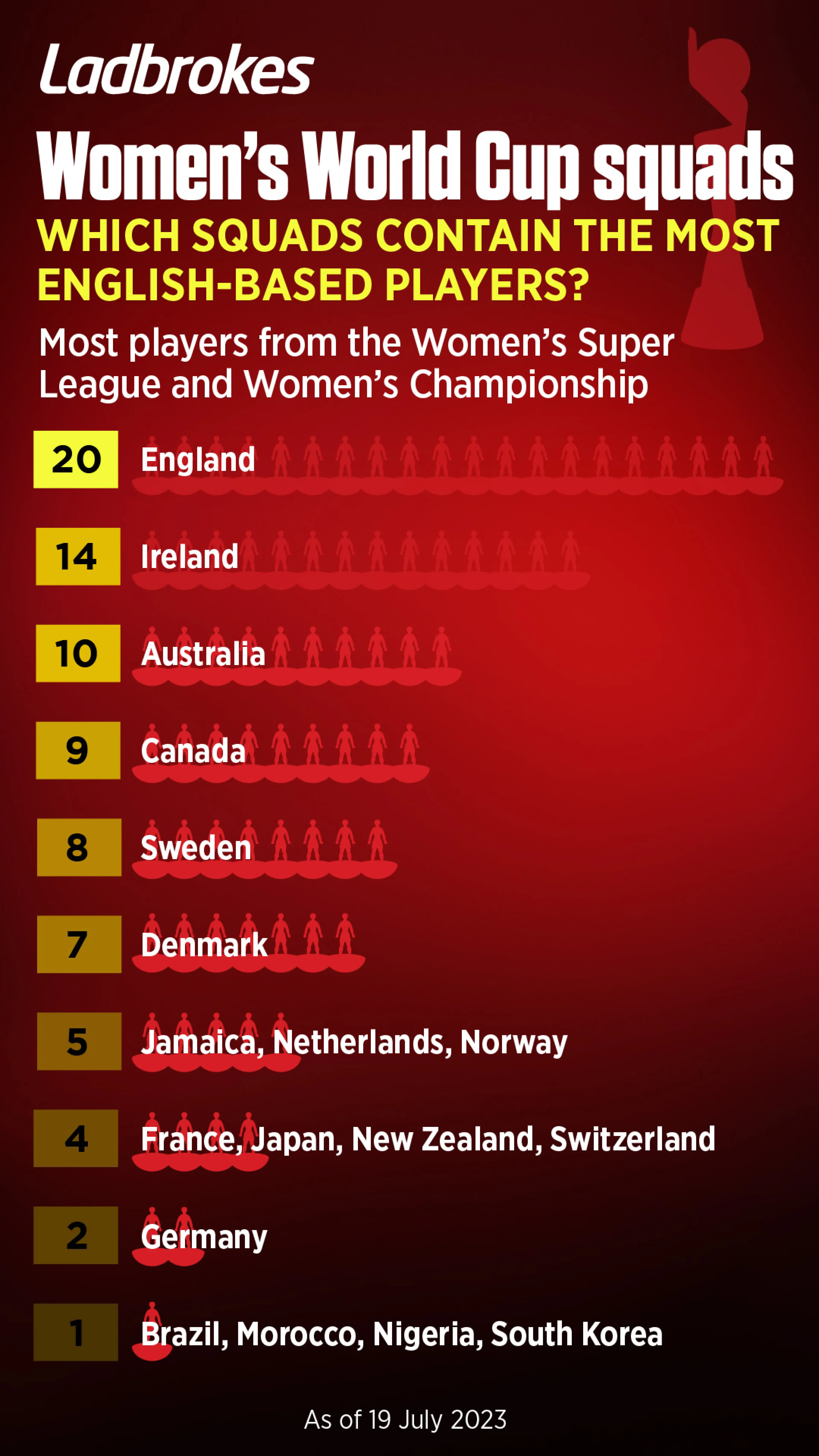
Players from the Women’s Super League (WSL) and the Women’s Championship are spread across 18 squads.
All but three of England’s 23 ply their trade at home, with Barcelona duo Bronze and Walsh, and Bayern Munich’s Georgia Stanway being the only exceptions. Elsewhere, 14 members of Ireland’s squad play their club football in England, with Australia next on 10, followed by Canada (nine), Sweden (eight) and Denmark (7).
Who is giving youth a chance and who is relying on experience?
The average age of all 736 players in the tournament is 26 years and 300 days, but the age profiles of the 32 squads vary significantly.
England’s opening opponents Haiti are comfortably the youngest group, with an average age of just 22 years and 330 days and a whopping 11 players aged 21 and under. Zambia’s squad is the next youngest at 24 years and 170 days on average, but only five of their players are yet to reach 22.
By contrast, 12 of South Korea’s travelling party are aged over 30, with the United States the only other country in double figures with 10. With an average age of 29 years and 140 days, the South Korean squad is the oldest in the tournament, ahead of Ireland (28 years 355 days) and Sweden (28 years 345 days).
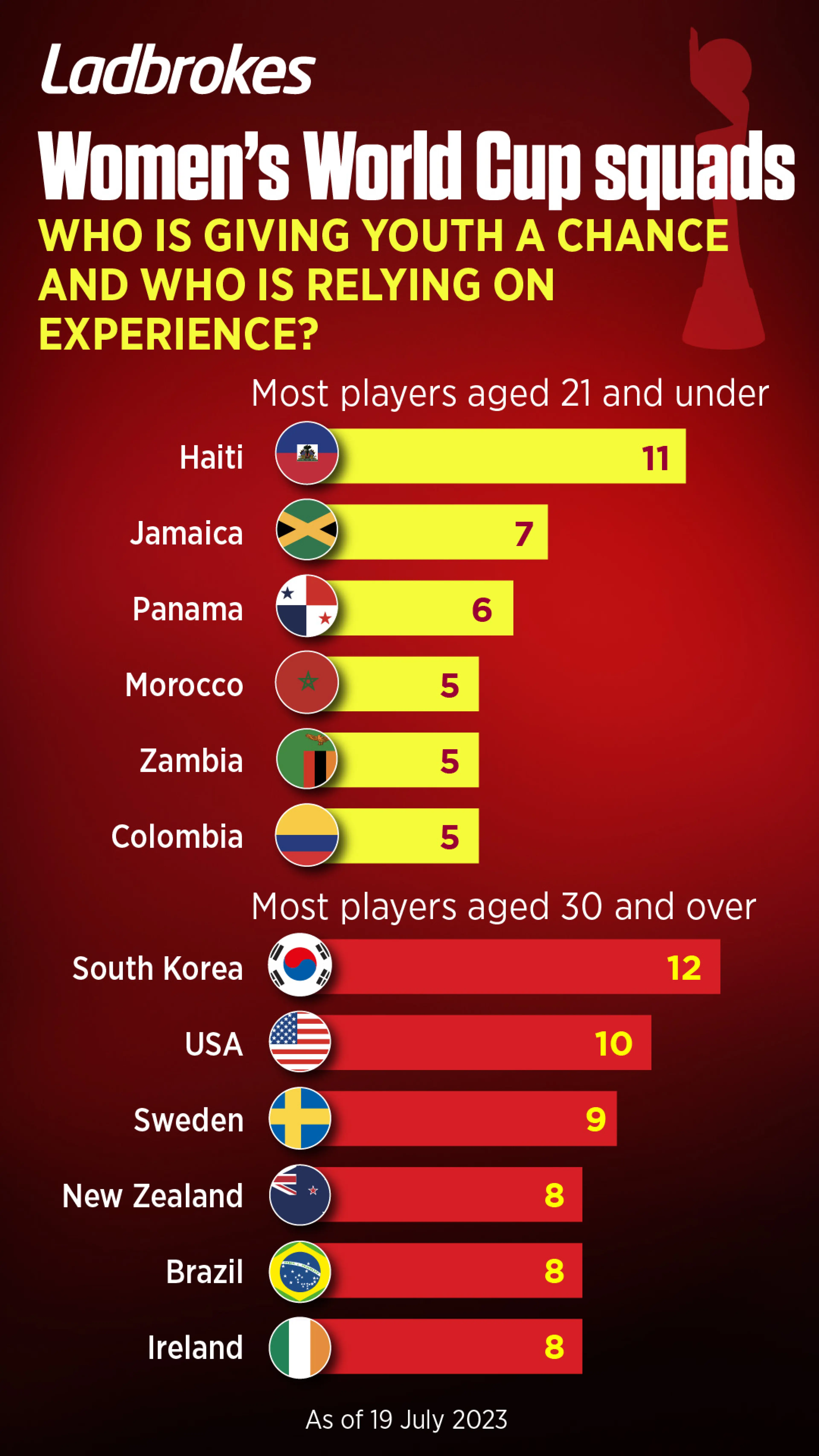
Despite selecting the oldest squad on average, South Korean manager Colin Bell can call on the youngest player at the World Cup in 16-year-old Casey Phair. The American-born forward would become the youngest in the tournament’s history should she feature in either of her adopted country’s first two games against Colombia or Morocco.
Meanwhile, the solitary pair of 40-year-olds at the tournament – Nigeria’s Onome Ebi and Canada’s Christine Sinclair – have already met in an opening goalless draw, in which Sinclair saw a crucial penalty saved by 22-year-old goalkeeper Chiamaka Nnadozie.
Who are the most experienced players?
Sinclair began the tournament with 323 caps and 190 international goals – a world record for any player, male or female. Nnadozie’s penalty save prevented Sinclair from scoring in a record sixth World Cup, although she has a minimum of two further opportunities to rectify that in Canada’s remaining group matches.
Brazil’s Marta – the all-time World Cup top scorer with 17 out of a total of 122 international goals – and Portugal’s male star Cristiano Ronaldo are the only other players to have scored at five World Cups.

Sweden’s Caroline Seger is Europe’s most-capped player with 235 international appearances, ahead of Dutch midfielder Sherida Spitse on 216. Sinclair’s Canadian team-mate Sophie Schmidt is behind Seger but ahead of Spitse in terms of experience, with 221 caps to her name.
Legendary American stiker Alex Morgan – scorer of 121 international goals – is the only other player in Australia and New Zealand with more than 200 caps under her belt.
Which squads are the tallest and shortest?
England will need to be aware of Denmark’s aerial threat when the sides meet on July 28, with the Danish squad ranking as the tallest in the tournament at 173.5cm – around five feet and eight inches – on average.
Kaiya Jota, back-up goalkeeper for the Philippines, is the tallest player at the World Cup at 190cm (six feet and three inches).
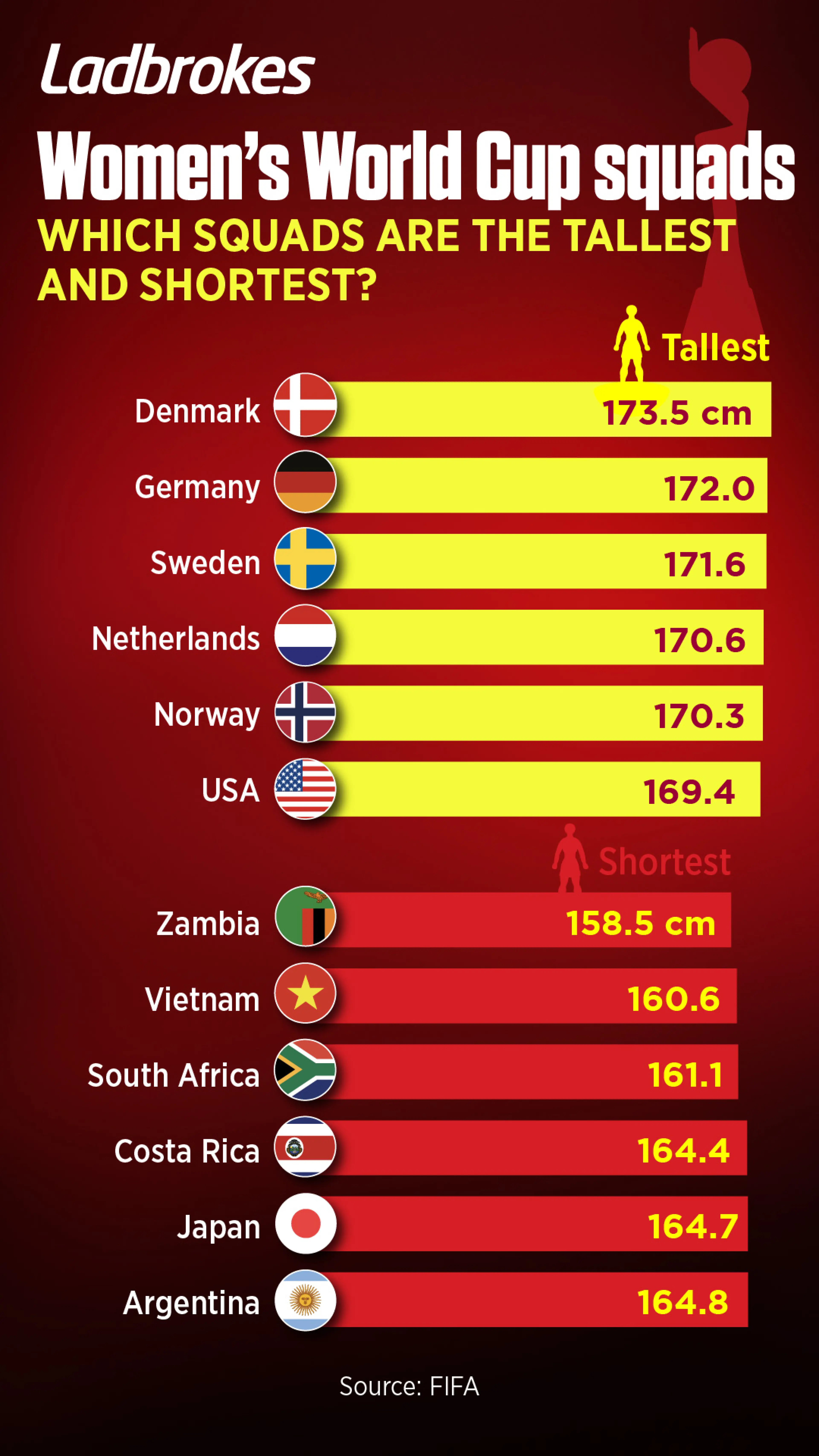
At the other end of the measuring scale, Zambia’s squad is comfortably the shortest at 158.5cm (five feet and two inches) on average. The two shortest players at the tournament – midfielder Avell Chitundu (140cm) and full-back Margaret Belemu (145cm) – both play for the World Cup debutants.








